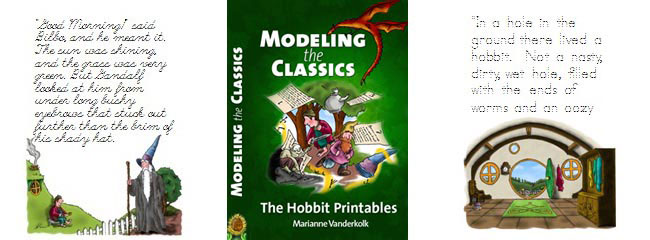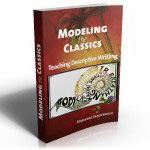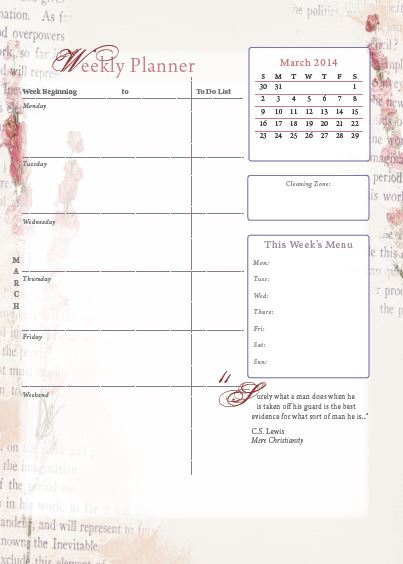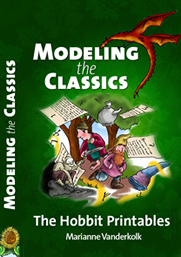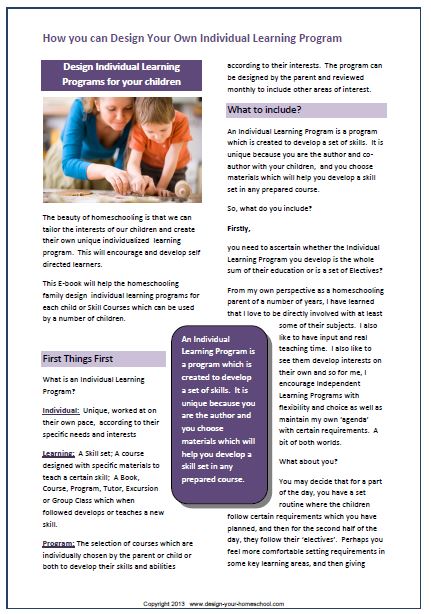A Language Arts Lesson Plan based on Literature
Develop your own language arts lesson plan
On my page: Ways to Teach Writing, I described four ways to add stylistic elements to teach writing.
- The Words of the sentence
- Phrases and Clauses
- Sentence Openers
- Other Stylistic Elements
So, basically what you need to do when creating your own language arts lesson plan based on the literature you are using, is to use the best excerpts and apply different stylistic elements to it..... and then do it again and again ... with different literature.
You may like to go to my 10 Step Writing Outline to help you.
Some Language Arts Lesson Plan Examples:
The Language Arts Lesson Plans below use the process of choosing an appropriate, excellent model, reducing it to the bare bones, and then fleshing it out again and adding the stylistic elements above. If you would like to use this approach please select the desired Language Arts Lesson Plan that suits your needs.
These writing lessons are organized according to the main focus of the lesson.
- The Words of the sentence: Nouns and Verbs
- Phrases and Clauses: Prepositional Phrases
- Sentence Openers: Using varied sentence beginnings.
- Other Stylistic Elements.
Main Grammar Focus: Nouns and Verbs
The Boy who cried Wolf
There was once a shepherd boy who cared for the sheep for all the people in the village where he lived. Every morning he collected the sheep from their owner's and drove them out carefully and brought them home again.
Day One
Copy this passage out neatly. Take care to put in the capital letters and full stops.
Day Two
Place a tick above all the articles. (a, an, the) Near each article, you will find a noun. Underline the nouns in blue.(boy, wolf, boy, sheep, people, village, morning, sheep, owner, home). For it to be a noun you must be able to place "the" in front of it or make it plural "boy- boys."
Find the verbs. Verbs are action words. What did the Noun do? Find a verb by saying "Noun..what did it do?""Boy...what?"- cried; "wolf- what?" - nothing; "boy- what?" -cared, collected, drove, brought; "sheep...what?" -nothing;"people..what?"-nothing; "village..what?" -nothing; "owner...what?" -nothing; "home...what?"- nothing;
Day Three
Diagram the sentences using only nouns and verbs; Nouns and verbs are on a horizontal line; A vertical line separates a noun from a verb.
Example: Boy|cried; boy|cared; boy|collected; boy|drove; boy|brought;
Day Four
Use the nouns|verb diagrams from Day Three, and alter the words using a thesaurus.
An Online Visual Thesaurus is a heap of fun. It really is very visual and gives you wonderful ideas on different ways to express yourself.
Also add interesting describing words (adjectives) to the nouns.
For example: The frightened boy|shouted; The tall, brown-haired boy|looked after; and so on.
Day Five
Edit your noun|verb diagrams;
Proof-read, improve and re-write the whole sentence using your own ideas.
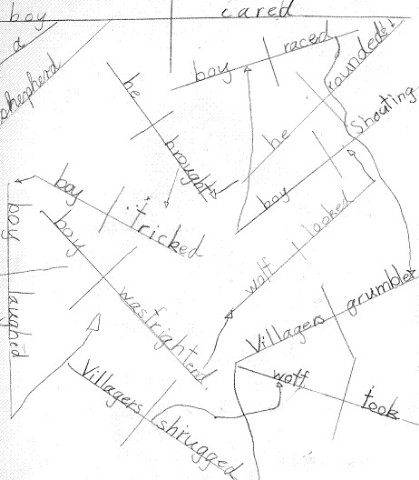
This Language Arts Lesson plan can be used as is or adapted to suit any sentence or paragraph of your choosing.
Experiment and play around with words! You can see how this can be diagrammed here.
Main Focus: To copy the Descriptive Style of the Author
Text: An excerpt from, "By Pike and Dyke" by G.A.Henty
The landlord, who was leaning against his counter,did not advance to meet him; for strangers were by no means popular, and a suspicion that the new-comer was a spy would speedily empty his house.
Day One: Copy the passage.
Day Two: Diagram the passage or just one sentence.
Steps to Diagram: What is the subject of the sentence? "Landlord".What did the subject do? "did advance" (verb)How did he "advance" ? "not" (adverb)Which landlord was it? "the" (article/ adjective) "who was leaning against his counter" (relative clause)Subject-Verb- What? The landlord did advance what? "to meet him" (inifinitive phrase)Why verb? Why did he not advance? "for strangers were by no means popular" (adverbial clause, from 'did advance')Why verb? Why did he not advance? " a suspicion would empty his house." (adverbial clause from 'did advance').What suspicion? "that the new-comer was a spy" (adjectival clause from suspicion).
All nouns and verbs are on horizontal lines.
Adjectives are on a slanted line under the nouns.
Adverbs are on a slanted line under the verbs.
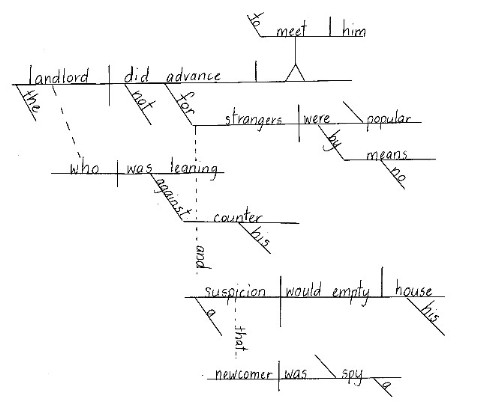 Diagramming the passage from "By Pike and Dyke" by G.A.Henty
Diagramming the passage from "By Pike and Dyke" by G.A.HentyDay Three: Identify the stylistic elements in the writing. Write your own basic sentence without prepositional phrases, adjectives, adverbs (decorations).
G.A.Henty uses adverbial and adjectival clauses.
Own Sentence example: The boy cycled to the cricket.
Day Four: Add to your sentence in a similar style to the author. Use the diagram from Day One, and copy this as a model.
Day Five: Proofread your sentence; Edit it and write your final copy.
Example: The young boy, who loved sport and also many musical instruments like the trombone and violin, but especially the piano which he played nearly an hour a day, cycled to the cricket and you could not imagine his joy when he found out his piano teacher was there.
This Language Arts Lesson Plan can be adapted easily to other literary passages.
Main Focus: To concentrate on Sentence Openers
Text: The Fox and the Grapes - Aesop
Taken from "Classical Compositon.".
One hot summer's day a Fox was strolling through an orchard till he came to a bunch of Grapes just ripening on a vine which had been trained over a lofty branch. "Just the thing to quench my thirst, " quoth he. Drawing back a few paces, he took a run and a jump, and just missed the bunch. Turning round again with a One, Two, Three, he jumped up, but with no greater success. Again and again he tried after the tempting morsel, but at last had to give it up, and walked away with his nose in the air, saying, : "I am sure they are sour."
Moral: It is easy to despise what you cannot get.
Day One: Copy the fable.
Day Two: Write three keywords per sentence which contain the main idea.
Day Two Example : Keyword Outline:
Fox, vineyard, looking
Grapes, hanging, clusters
Trained, strained branches
jumps, missed bunch,
tired, crossly, muttering
Who wants grapes anyway?
walked away, thinks sour
despises prize
Day Three: Keeping the moral in mind, put the fable into a different context with different characters. Using the keyword outline, substitute their words for your own - making it the basis for your own fable.
Day Three Example: Substitute keywords for your fable:
Robber, castle, looking
gold crown, glass cabinet
sensors, guards, alarm
crawled quietly
heard alarm, cross, escapes
not pure gold, anyway
fake
despises prize
Day Four: Re-write the sentences using your own keywords this time. Look at the chart of Sentence Openers. Begin each sentence in a different way.
Day Four Example: Using different Sentence Openers:
Into the caste, went the robber in black. (Prepositional Phrase).
He found the gold crown with gems in a glass cabinet. (Subject).
Sensors were everywhere so he crawled close to the ground, but the alarm went off.(subject)
Crossly, he escapes and was heard muttering. (Adverb)
"Anyone could see it was not pure gold!" (speech)
It was fake, fake as a doll! (subject)(use of a metaphor)
People pretend to despise what they cannot have.
Day Five: Edit and Proof-read your work. Re-write your final copy neatly into your Writing Treasure.
Use this Language Arts Lesson Plan as is, or adapt it to suit your own writing passage. Bookmark this page to see what new Language Arts Lesson Plans have been added.
Where to from here?
- Leave Language Arts Lesson Plan and go to Language Arts Sitemap
- How to design your home school language arts curriculum
- Return to Ways to Teach Writing
